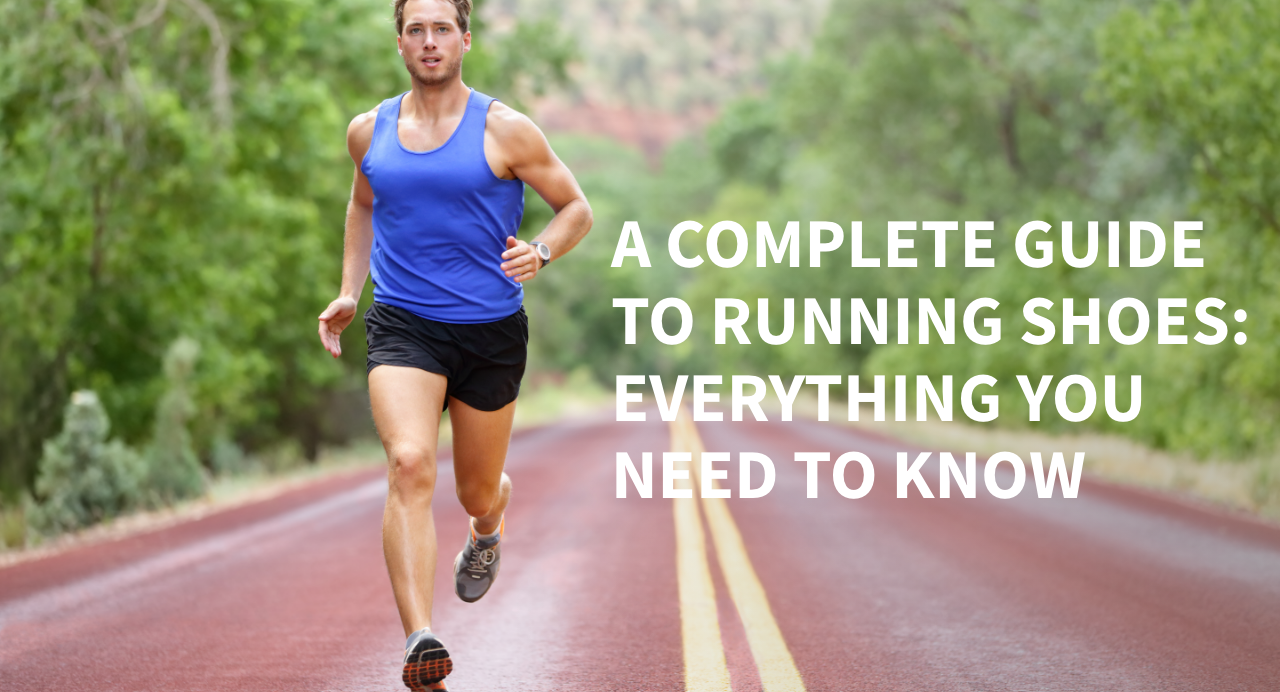free foot analysis
How To Pick The Right Running Shoes
When committing to purchase a pair of running shoes, there are a few important characteristics to watch for and pitfalls to avoid.
There are many different types of running shoes available, which can be quite confusing when you first try to choose a shoe. The paradox of choice can soon set in with so many options available. Thus always keep in mind that selecting running shoes is not a precise science.
The most crucial thing to remember is that there isn't one "ideal" running shoe that will fit everyone's feet and preferences. You can't follow a precise recipe that will get you the ideal pair of shoes.
It takes some trial and error, and as your physique and running abilities evolve, so will your shoe needs. As a result, your objective should be to choose a pair of running shoes among the many options available that will help you reach your running objectives, keep you happy for many miles, and prevent injury.
Here's our comprehensive running shoes guide and all you need to know before picking the perfect pairs of shoes!
What You Should Know Before Buying Running Shoes
Size, width, understanding how we run and make contact with the ground (pronation), the terrain and distance we intend to run on, and of course, our budget are all crucial considerations before making a purchase. The essential components of the running shoe have been split down so you can quickly recognize them and make sure they each fit your foot appropriately. Keep an eye out for the following tips on what to consider when buying running shoes.
How Should Your Shoes Fit
Each component of the running shoe serves a certain function and is made to fit the foot in a particular way. Even the smallest difference could impact your experience. Your shoes should always be comfortable and stable, above all else. Never force your toes into a tight space, or wear anything that makes your heel feel tired, for example.
Consider Your Running Surface
The part of your running shoe that touches the ground is called the outsole. It is often made of different rubber or foam compounds that are placed in a way that improves wear resistance, bounce, or flexibility. Consider materials that give you grip and durability without making the shoe heavier or stiffer and a shape that matches your footprint and gives you the stability you want. Above all, when buying running shoes, consider the type of surface you’ll be using them on. Will you run mostly on the road, on wooden floors, tracks, or a trail?
Your Running Shoe History and Recurring Injuries
Running shoes can be divided into four groups: neutral, stability, motion control, and minimalist (including barefoot shoes). These classifications provide progressively more gait correction and stability technology. Want to find out the difference between them? Check out this article.
Do you pronate too much? Alternatively, do you heel strike or underpronate? Are you prone to running-related problems like plantar fasciitis? You can determine the type and level of stability you require in your running shoes by taking into account the following:
Midsole Shape
Some shoes have flex grooves under the ball of the foot that let the shoe bend the same way your foot does. Small changes in location or angle can make your stride feel different and change how it works as you go faster. Most rocker-style midsoles have stronger toe springs, which lets the foot roll forward faster during the gait cycle. Look for a shoe that bends or rolls at the same speed your foot naturally moves in.
Arch Type
Knowing your arch type is the first step to buying a pair of running shoes. By performing the following three steps, you can quickly determine this:
Flat
The arches in flat feet are either very low or invisible. They leave behind nearly complete imprints resembling the foot's sole. Often flexible and prone to overpronation.
Medium
These feet make an impression that solely reveals the heel and forefoot joined by a broad band, with modest to average arch proportions. Normal-footed runners typically have a semi-flexible arch.
High
The foot has high arches when the joint between the heel and forefoot is very small. The rigidity of high-arched feet makes them less able to pronate enough to absorb trauma. Running shoes with more cushioning and a neutral sole may be preferred by athletes with high arches for this reason.
Heel and Forefoot Cushioning
The midsole component, known as heel cushioning, is intended to lessen the impact shock of a heel strike. Some shoes have a softer "crash pad" area on the outside of the foot or a rounded outer heel to soften the landing, in addition to using a range of cushioning materials. You'll want to strike a balance between stability, cushioning, and ground sensation. Note whether the shoe rolls into the stride smoothly and lands where you anticipate it to throughout your test runs.
Heel-Toe Drop
When wearing shoes, the drop refers to the height difference between the heel and the ball of your foot. While experts dispute the significance of drops in relation to injuries, they do concur that adjusting the drop can change how forces are distributed between your foot and leg and affect how you walk.
Assess Your Gait and Running Style
To prevent the foot from excessive motion, especially overpronation or rolling inward, designers employ a number of technologies, including medial posts, dual-density foams, guide rails, and larger shoe shapes. The majority of people do not require pronation support, although some runners may benefit from control and stability equipment. Instead of overcorrecting, your shoe should provide stability as support. You might prefer a shoe with more of these stabilizing qualities if you overpronate. Be aware if your feet present any of these pronation characteristics:
Neutral
Also known as neutral pronation, this occurs when your foot inward rolls normally. It aids in impact absorption and releases strain from the knees and joints. It is a common characteristic of balanced, biomechanically effective runners.
Overpronation
Overpronation is one of the most common pronation types in runners. This happens when your foot rolls abnormally inward, putting you at risk for harm. Overpronators may benefit from motion control or stability footwear. On the inside of your soles at the ball of your foot, look for wear patterns close to your big toe.
Supination (Underpronation)
When your foot rolls abnormally outward, putting you at risk for injuries or harm. Overpronators may benefit from motion control or stability shoes. On the inside of your soles at the ball of your foot, look for wear patterns close to your big toe.
Types of Running Shoes (Based on Surface Needs)
Your choice of the ideal pair of running shoes for yourself will be influenced by a wide range of circumstances. To choose the best kind of shoe for you, you will typically have to choose between two different types.
We must first consider the kind of surface you will be running on. You obviously want to have different shoes for different purposes, and once you know the surface, then you can look into the other characteristics like arch support and forefoot cushion.
Brooks Adrenaline GTS 22

The Brooks Adrenaline GTS 22 offers a responsive foam midsole that provides long-lasting cushioning. That responsive foam now extends throughout the entire midsole, adding shock absorption, comfort, and a smoother transition from heel to toe. The Adrenaline GTS 22 is fantastic for those who suffer from Plantar Fasciitis, Morton's Neuroma, and Heel Spurs, by delivering on-demand support the GuideRails® allows your hips, knees, and joints to move within their unique motion path while you walk. This style offers a secure fit with the 3D Fit Print Engineer Air Mesh upper that applies strategic stretch, great for those with bunions.
HOKA Bondi 8

HOKA's new and improved Bondi 8 offers cushioned comfort. This ultralight shoe is made with even lighter materials that offer all-day stability and support. The new Bondi 8 features an extended heel for more pressure distribution, softer and lighter foam, and a pillowed tongue for maximum performance.
Brooks Ghost 15

The new Brooks Ghost 15 is one of Brook's fan-favorite styles. This particular model features Brooks' DNA LOFT foam cushioning throughout the entire midsole, which creates a plush cushion for your feet. The added shock absorption is great for those with plantar fasciitis. The Ghost 15 maintains the same great seamless mesh upper, and stable on-foot feeling you know and love. The Ghost 15 is the sweet spot between roomy and secure.
New Balance Fresh Foam X 1080v12

The New Balance 1080v12 provides luxurious comfort for all-day wear. This soft, plush shoe features New Balance's patented Fresh Foam on the underfoot, giving those with plantar fasciitis, Morton's Neuroma, Heel Spurs, or metatarsalgia the instant feeling of comfort. If you have bunions, you'll love the stretchy knit upper that offers 360 degrees of comfort. You'll be turning heads when you wear this modern take on a running shoe!
New Balance Fresh Foam X 860v13

The New Balance Fresh Foam X 860v13 is your go-to shoe when you need stability and cushion. Fresh Foam X technology gives you a plush and cushioned feel, while its medial post supplements your feet with top-tier stability. Designed with a snug fit in mind, the 860 has a structured and breathable mesh upper and a gusseted tongue to provide a secure fit. The 10 mm heel to toe drop, which helps offload pressure from the heels to the ball of the foot, is what makes this a great shoe for those who suffer from heel pain like Plantar Fasciitis, Morton's Neuroma, and Heel Spurs.
HOKA Clifton 9

The HOKA Clifton 9 is a lighter, and more responsive midsole stacked with 3 mm of cushioning. Also added is a plusher heel to take more pressure off the heel, perfect for those with heel spurs or Plantar Fasciitis, Morton's Neuroma, and Heel Spurs.
Types of Running Shoe By Terrain
The first thing to consider is the kind of surface you'll be running on. This will establish the wide shoe category to consider and considerably reduce the available possibilities. Running shoe features vary depending on the terrain; for example, trail running shoes may have additional elements that set them apart from road running shoes.
Trail Shoes
Conversely, trail running shoes prioritize grip, traction, flexibility, and cushioning in order to adapt to uncertain terrain and gravel paths. To shield your feet from pebbles, nettles, and other sharp objects, they frequently also have a stronger, more robust top.
Road Shoes
Running on hard, homogeneous road surfaces exerts more stress on our knees, ankles, and other weight-bearing joints when opposed to softer conditions. Road running shoes often have shock-absorbing and supportive characteristics to prevent injuries.
Track Shoes
You can definitely work out on the track while wearing regular road shoes. But if you want to compete in track meets, you might require a pair of spikes or racing flats. Short-distance racing is intended for these shoes, sometimes known as track spikes.
Spikes are stiffer shoes because of the actual plastic or metal spikes that are inserted in the front area of the shoe for better traction.
Types of Running Shoe By Gait
Gait analysis and other methods can be helpful, but only if the store employee understands how to evaluate them. While they can help you choose the perfect shoes, gait analysis, and foot type are less useful without professional assistance. At Lucky Feet Shoes, we offer gait analysis and recommend the best running shoes for you.
Running shoes come in three primary categories:
Neutral Running Shoes
- They frequently lack motion control elements like "medial posts," which support the arch side of each midsole.
- Although they can help mild pronators, they are most effective for neutral or supinators (tend to roll outward).
Stability Running Shoes
- They frequently have guide rails that regulate motion from side to side.
- These shoes offer pronation-controlling stability features.
- Suitable for runners who overpronate mildly to moderately.
- They are stiffer than neutral running shoes but less so than motion-control shoes.
Motion Control Running Shoes
- They frequently have guide rails that limit side-to-side mobility.
- These shoes offer pronation-controlling stability features.
- Suitable for runners who overpronate mildly to moderately.
- They are stiffer than neutral running shoes but less so than motion-control shoes.
Avoid Common Shoe-Buying Mistakes
When runners visit specialty running stores to buy shoes, staff members see them commit the same mistakes again and again. Typical errors include:
- Buying for looks only.
- Shoes that are too tight because they were not tried correctly.
- Assuming the shoe size.
FAQs About Running Shoes
Is it ok to walk in running shoes?
Yes. Walking shoes and running shoes both have characteristics that make them excellent for physical activity. Running shoes are wonderful walking shoes since they are made to last for the demanding demands of running.
What are the three types of running shoes?
You have the option of wearing cross-training, road running, or trail running shoes.
Can any shoe be a running shoe?
No is usually the answer to that. People need a real running shoe's support, cushioning, and good wicking. It will make your knees feel better and keep you from getting blisters.
At Lucky Feet, we carry a wide selection of shoes from top running shoe brands so if you're shopping for new running shoes with even the most specific features and types in mind—fits your foot shape, has more energy return, has a wide toe box, has a specific heel-to-toe drop, stability shoes, neutral shoes, minimalist shoes, etc.—we have the right shoes for you.

Jerick Sobie
Since 2005, I have been a dedicated small business owner specializing in footwear retail. With over 20 years of experience, my business partner and I have helped customers find the perfect shoes that combine style, comfort, and quality. Our expertise extends beyond local sourcing—we have traveled internationally to discover high-quality footwear that meets our customers’ needs. In addition to running my business, I have participated in numerous health fairs and educational seminars, sharing my knowledge on proper footwear and foot health. Committed to providing exceptional service, We carefully curate our selections to ensure the best fit and support for every customer.






















